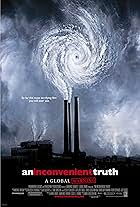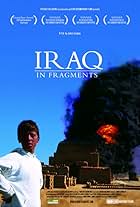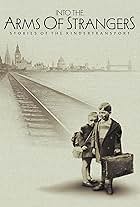AVALIAÇÃO DA IMDb
7,2/10
18 mil
SUA AVALIAÇÃO
Dois documentaristas narram seu tempo em Sonagchi, no bairro de Calcutá na Índia, e os relacionamentos que desenvolveram com filhos de prostitutas que trabalham no conhecido distrito da luz ... Ler tudoDois documentaristas narram seu tempo em Sonagchi, no bairro de Calcutá na Índia, e os relacionamentos que desenvolveram com filhos de prostitutas que trabalham no conhecido distrito da luz vermelha da cidade.Dois documentaristas narram seu tempo em Sonagchi, no bairro de Calcutá na Índia, e os relacionamentos que desenvolveram com filhos de prostitutas que trabalham no conhecido distrito da luz vermelha da cidade.
- Direção
- Roteiristas
- Artistas
- Ganhou 1 Oscar
- 21 vitórias e 5 indicações no total
Zana Briski
- Self "Zana Auntie"
- (não creditado)
Sunil Halder
- Self
- (não creditado)
- …
- Direção
- Roteiristas
- Elenco e equipe completos
- Produção, bilheteria e muito mais no IMDbPro
Avaliações em destaque
In India, red light districts are booming in cities like Mumbai, Delhi, and Calcutta where millions of transient men live and work far away from their homes and wives. The oldest and the largest of these is Sonagachi in Calcutta where the women have organized into a sex trade union of more than 5,000 active workers and have spread awareness about AIDS and HIV, making Sonagachi one of the few red light districts in the country that does not accept clients without condoms. Subject to a class system that puts them on the lowest rung of Indian society, the mostly illegitimate children of the sex workers are also expected to "join the line" when they reach a certain age. Minor girls are the most sought after in the brothels and secure the highest price, making it very difficult for the parents to let them leave, especially when the only other alternative may be the starvation of their entire family.
In 1997, photographer Zana Briski was assigned to capture images of Sonagachi. While the women were reluctant to let her into their lives, the children quickly responded and Briski became a resident of the brothel for five years. During that time, she provided the children with point and shoot cameras, set up classes in photography, and trained them to document the harsh reality of their daily lives. The result is the Oscar nominated documentary Born Into Brothels, a film that takes us inside the squalid brothels and allows us to see the world through the eyes of some of its most vulnerable residents, five girls and three boys, ages ten to fourteen. Shot in dazzling color using a digital camera, we get to know the children through their photos.
There is Kochi, age 10, who is strong, resilient, tough, and sensitive. Avijit, age 12, seems to be the most talented of the group. He draws, paints, takes pictures and, through Briski's patient efforts, was able to obtain a passport to be a part of a photo-editing panel in Amsterdam. Shanti, age 11, is most eager to learn but is troubled and often feuds with her brother Manik. The others: Gour, Puja, Tapasi, and Suchitra all show a unique ability to find beauty in their ugly environment. The film documents Briski's uphill efforts to place the children in boarding schools to escape the cycle of poverty and exploitation. Some manage to find places in the schools but the biggest obstacle is shown to be the children's own mothers and guardians, often protective out of the sheer necessity for survival.
Born Into Brothels is a testimony to the transforming power of art and of one individual's ability to make a difference. Showing the children's art to Western audiences has helped to raise money for the Sonagachi children's education. It may also serve to make people more aware of the potential talent of millions of other third world children who struggle daily for existence on the streets, the orphanages, and the refugee camps of our teeming world.
In 1997, photographer Zana Briski was assigned to capture images of Sonagachi. While the women were reluctant to let her into their lives, the children quickly responded and Briski became a resident of the brothel for five years. During that time, she provided the children with point and shoot cameras, set up classes in photography, and trained them to document the harsh reality of their daily lives. The result is the Oscar nominated documentary Born Into Brothels, a film that takes us inside the squalid brothels and allows us to see the world through the eyes of some of its most vulnerable residents, five girls and three boys, ages ten to fourteen. Shot in dazzling color using a digital camera, we get to know the children through their photos.
There is Kochi, age 10, who is strong, resilient, tough, and sensitive. Avijit, age 12, seems to be the most talented of the group. He draws, paints, takes pictures and, through Briski's patient efforts, was able to obtain a passport to be a part of a photo-editing panel in Amsterdam. Shanti, age 11, is most eager to learn but is troubled and often feuds with her brother Manik. The others: Gour, Puja, Tapasi, and Suchitra all show a unique ability to find beauty in their ugly environment. The film documents Briski's uphill efforts to place the children in boarding schools to escape the cycle of poverty and exploitation. Some manage to find places in the schools but the biggest obstacle is shown to be the children's own mothers and guardians, often protective out of the sheer necessity for survival.
Born Into Brothels is a testimony to the transforming power of art and of one individual's ability to make a difference. Showing the children's art to Western audiences has helped to raise money for the Sonagachi children's education. It may also serve to make people more aware of the potential talent of millions of other third world children who struggle daily for existence on the streets, the orphanages, and the refugee camps of our teeming world.
Greetings again from the darkness. Rarely does a documentary attract much of an audience ... that is unless it is one of the slanted visions of Michael Moore. Realizing not many will see "Brothels" leaves me feeling both saddened and anxious. What a remarkable story that Zana Briski and Ross Kauffman have brought to our world. The kids will capture your heart within the first few moments of the film. Although the story is definitely the kids, the hero is Ms. Briski. Her tireless efforts to give them hope and a way out should be enough motivation for each of us to realize we can make a difference in the world. This film pulls no punches in showing us the underbelly of one of Calcutta's red light districts and how it so impacts these families. The girls are resigned to the fact that it is their future. The boys are helpless to save their friends. Enter Ms. Briski with cameras in tow. You will feel so energized watching the children explore and capture their world through a lens. The photos are nothing short of stunning and were a hit at the World Festival a couple of years ago. Although not successful in saving them all, Ms. Briski did make a difference and provides a guiding light to us all.
A great documentary, which reveals a sad Indian reality, it makes us think about human rights, especially children. The documentary carries shocking phrases especially because they are spoken by children. At last a great movie even being a sad story.
It would certainly take a filmmaker of much self-consciousness, something which Zana Briski certainly possesses, to make this film the way she has. Having met with uncooperative roadblocks to shooting a documentary about sex-workers and their families within the squalid confines of Calcutta's red-light district, Briski states early on that she decides to have the children themselves tell their story by supplying them with automatic cameras to use in their own personal ways. The film, however, ultimately becomes an account of one outsider's attempt to save these children from their miserable fates - poverty and sexual abuse. With the children's sex-worker mothers and families, many of whom have apparently spent generations in the district with no escape in sight, used as background elements, Briski focuses solely on the children, entering them into an informal photography seminar where they gather to share contact sheets of their pictures and discuss the problems of shooting amidst uncooperative and hostile subjects and why certain pictures work and why some don't. Thankfully, Briski also interviews the children, and while it's not clear they understand her theories on picture composition, they are, despite being denied education and living amidst fairly brutal conditions of abuse, poverty and indentured servitude, very perceptive and wise to the unfortunate conditions in which they live, their prospects and possess an awareness of the possibilities of life outside of the district. Briski becomes further involved with the children by trying to enter them into school, though most will not accept them because they are the children of sex workers. Indeed, it is the indifference of Indian authorities to the children's plight as much as the abuse they receive from their depraved parents that shocks the viewer. Briski, with some help from some photographic arts people in the United States and Amnesty International, is able to use the children's pictures as a commercial vehicle to raise money to enable them to enroll in a private boarding school (the kids are well aware that education is their only way out of the brothels). Here, Briski's movement somewhat takes over the movie from her subjects, proving how futile western notions of compassionate aid often are to endemic and grave third-world situations like we witness here. This is driven home when of the kids accepted into the boarding school, only one eventually remains because of the economic pressures put upon their families in which the children essentially act as indentured servants, performing household tasks day and night and odd jobs for additional income. So, while the film becomes a parade for Briski's noble cause, I would have liked to have seen more background and interaction between the children and their surroundings, other than simply as child photographers who have been given a brief and, for most of them, fleeting reprieve from their depraved surroundings.
This film should be seen by everyone who has any sense of what the world is and can be if we give our attention and empathy to make it a better place --in the background I hear the greed and anger of Donald Trump and it is so jarring (and sad) and disturbing ....it is absolutely amazing the dedication and caring of Zana Briski an Ross Kauffman and their attempt to support and change the destinies of these poor unfortunate children who are doomed to a life of humiliation, poverty and human degradation. It is uplifting to know that there are people who care --who are not driven by greed and avarice-- who will try , no matter what the odds are, no matter what are the bureaucratic difficulties to help and support these poor unfortunate children .. I know that I have been immensely moved by this film and what is going on in a place like the red light district of Calcutta and will do what I can to make some impact with these unfortunate children in all of the various venues that these people have chosen to work in and do these miraculous things that are they are doing.
Você sabia?
- Trilhas sonorasSankarabaranam pancha nadai pallavi
Performed by Shenkar and The Epidemics
Principais escolhas
Faça login para avaliar e ver a lista de recomendações personalizadas
Detalhes
- Data de lançamento
- País de origem
- Central de atendimento oficial
- Idiomas
- Também conhecido como
- Born Into Brothels: Calcutta's Red Light Kids
- Locações de filme
- Empresas de produção
- Consulte mais créditos da empresa na IMDbPro
Bilheteria
- Faturamento bruto nos EUA e Canadá
- US$ 3.515.061
- Fim de semana de estreia nos EUA e Canadá
- US$ 14.605
- 12 de dez. de 2004
- Faturamento bruto mundial
- US$ 3.529.201
- Tempo de duração1 hora 25 minutos
- Cor
- Mixagem de som
- Proporção
- 1.37 : 1(original negative)
- 1.85 : 1
Contribua para esta página
Sugerir uma alteração ou adicionar conteúdo ausente



























